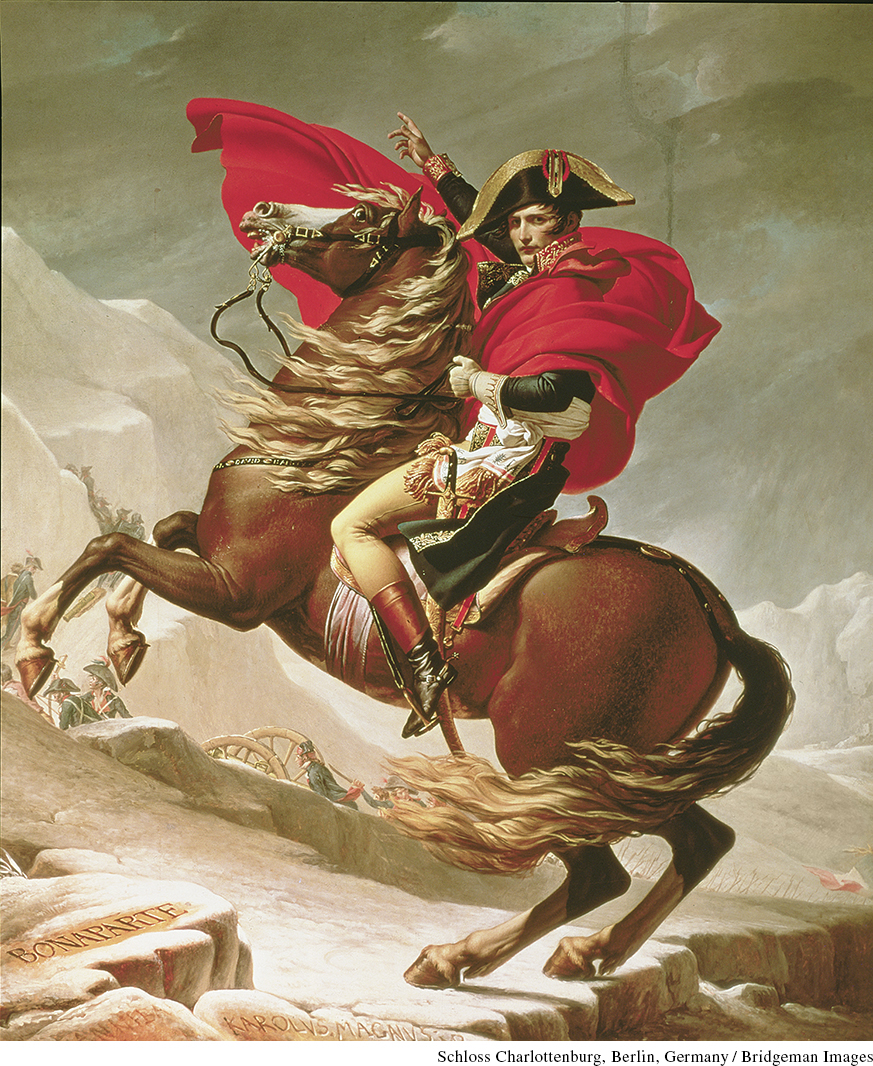Introduction for Chapter 20
Printed Page 638
Important Events
IN HER NOVEL FRANKENSTEIN (1818), the prototype for modern thrillers, Mary Shelley tells the story of a Swiss inventor, Dr. Frankenstein, who creates a humanlike monster. The monster terrifies all who encounter him and ends by destroying Frankenstein’s own loved ones. Despite desperate chases across deserts and frozen landscapes, Frankenstein never manages to trap the monster, who is last seen hunched over his creator’s deathbed.
Those who witnessed Napoleon Bonaparte’s stunning rise to European dominance might have cast him as either Frankenstein or his monster. Like the scientist Frankenstein, Bonaparte created something dramatically new: the French Empire with himself as emperor. Like the former kings of France, he ruled under his first name. This Corsican artillery officer who spoke French with an Italian accent ended the French Revolution even while maintaining some of its most important innovations.
Bonaparte continued the revolutionary policy of conquest and annexation until it reached grotesque dimensions. His foreign policies made many see him as a monster hungry for dominion; he turned the sister republics of the revolutionary era into kingdoms personally ruled by his relatives, and he exacted tribute wherever he triumphed. Eventually, resistance to the French armies and the ever-mounting costs of military glory toppled Napoleon. The powers allied against him met and agreed to restore the monarchical governments that had been overthrown by the French, shrink France back to its prerevolutionary boundaries, and maintain this settlement against future demands for change.
CHAPTER FOCUS How did Napoleon Bonaparte’s actions force other European rulers to change their policies?
Although the people of Europe longed for peace and stability in the aftermath of the Napoleonic whirlwind, they lived in a deeply unsettled world. Profoundly affected by French military occupation, many groups of people organized to demand ethnic and cultural autonomy, first from Napoleon and then from the restored governments after 1815. In 1830, a new round of revolutions broke out in France, Belgium, Poland, and some of the Italian states. The revolutionary legacy was far from exhausted.